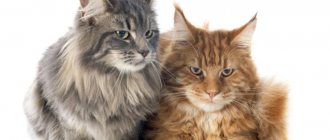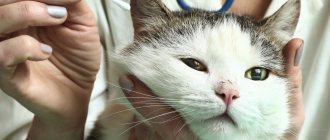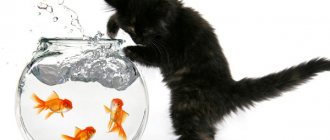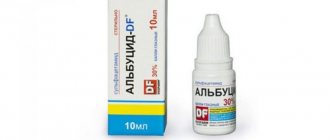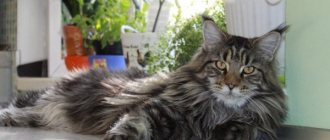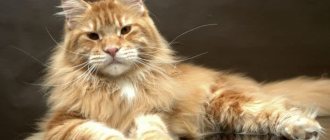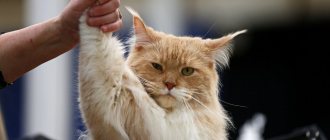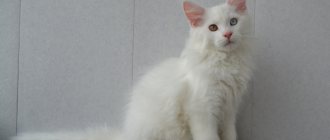Save article:
The Maine Coon is an amazing breed of cat that was developed about 150 years ago. This breed differs from its relatives in its large size and non-standard appearance. Description and character
The Maine Coon belongs to the class of long-haired cats. An adult male of this individual reaches 11-15 kg in weight, and a female 6-10 kg. Development in these animals proceeds quite slowly and the mature age of the breed is generally considered to be 4-5 years.
The Maine Coon's head is trapezoid-shaped. The ears, like the lynx, have tufts at the tips. The body of the animal is very muscular, it can be one and a half meters long. The neck is of standard length, the chest is massive, which gives the animal masculinity. The Maine Coon's paws are large, and there are tufts of wool between the toes. The tail of this breed is long and bushy, most often striped. The eyes of a purebred Maine Coon are any shade of yellow or green, and their shape is oval. The hair coat of Maine Coon cats is very thick and the hairs are long. The color of a cat can be varied, both light and dark. Their lifespan averages from 12 to 20 years.
In addition to its attractive appearance, the Maine Coon has a very friendly character. These animals are very smart and intelligent, they are sensitive to intonation, which makes raising and training a Maine Coon very easy. Maine Coons, like dogs, become madly attached to their owner and follow him on his heels. They absolutely do not like to be left alone and need constant attention.
Nutrition
There is no special nutrition for these animals; it is enough to feed the animal in a balanced manner so that it receives all the necessary vitamins, minerals and other trace elements. Ideally, an adult pet should be fed 3 times a day, but two meals a day are also allowed. What to feed Maine Coon cats: natural or prepared products - this is, of course, everyone’s business. Advantages of ready-made food:
- long-term storage;
- saving your own time;
- variety of finished product (you can buy food for a kitten, for a pregnant cat, for an elderly cat, etc.);
- balanced (premium food contains all the necessary substances required for the animal).
If you decide to feed your pet homemade food, then you should definitely consult with an experienced veterinarian who will create the correct diet for Maine Coon cats and include all the necessary elements. Also, do not assume that feeding homemade food is an economical option. In both cases, the financial investments will be approximately the same.
Any cat is, first of all, a predator that simply needs meat products. What can you feed a Maine Coon:
- Meat: poultry, poultry offal, beef, beef offal, lean veal;
- Dairy products: milk, cottage cheese, natural yogurt, sour cream no more than 15% fat, cheese;
- Porridge: buckwheat, oatmeal and multigrain;
- Fish and seafood should be included in a cat’s diet no more than once a month;
- Eggs, namely the yolk, are good for the body, but not more than 2-3 times a month;
- Vegetables other than potatoes and eggplant, only if the cat eats them;
- An herb that helps cleanse the body.
What does it look like
The climatic conditions of Maine, where the breed originated, had a significant impact on the appearance of these cats: in cold and snowy winters, cats could survive only thanks to their thick undercoat and massive physique. Wide, fluffy paws are also a “print” of the influence of climate, because thanks to this device the cat does not fall under the snow, but can slide along it. As for the size of the cat, this is its main advantage, which allows it to obtain food in the form of small animals without much difficulty. Of course, over time, the breed has undergone some transformations: the Maine Coons that we know now show weight gain, a more elongated face, and larger ears than their ancestors.
The sculpted head has an elongated, massive shape, with high cheekbones and a small nose. Such deformation is caused by natural need: the wild ancestors of the breed often looked for prey in burrows, sticking their noses into them, which became the prerequisites for the sharpening of forms. The head flows smoothly into a strong and muscular neck, which is decorated with a lush collar of wool. The most valuable for breeders are those with a collar that reaches the length of the ear flaps.
Wide-set eyes are round in shape and slightly squinting. Eye color, as a rule, includes various shades of yellow and green, which looks very harmonious in combination with the color.
The ears are large in size, slightly tilted forward, and have a wide base. The previously mentioned “lynx tassels” are the hallmark of the Maine Coon. Large, wide ears provide cats with good hearing, making them excellent at catching mice. At one time, it was with this advantage that fluffies conquered American farmers. The skin of the ears is thick and protected by a thick layer of hair; the cartilage has a dense structure. Cats know how to press their ears to their head, as if folding them - this provides them with protection from the cold wind.
The muscles are strong and well developed. The skeleton is large, wide; the back is straight. Strong limbs allow the cat to jump impressive distances. And massive, rounded fingers make the landing as soft and safe as possible.
The length of the Maine Coon's tail is equal to the length of its body. The tail is wide at the base and has no kinks. A dense and thick coat provides cats with protection from the winter cold: in extreme conditions, the tail curled around the body helps them not to lose body temperature. The length of the coat, as a rule, varies from 10 to 15 centimeters, has a heterogeneous structure, longer on the stomach and shorter on the back. The thickest fur is located on the thighs (the so-called “pants”). The back is mainly covered with guard hairs, the coat is more rigid. But the belly and sides are protected by an undercoat that resembles down.
Color
Maine Coons all over the world can vary significantly not only in color, but also in size. In the last decade, the show career has flourished for cats of almost all colors except lilac, brown and blue. But the recognized and popular colors are shades of black, white marble, and agouti.
Some Maine Coons, however, have defects and do not have the right to represent the show class, losing the opportunity to participate in exhibitions. Among these defects are:
- incorrect distribution of undercoat over the body area, relatively short hair on the “collar”;
- if the tail is shorter than the length of the cat’s body;
- if the animal is small in size;
- when blotches or spots are visible on the fur;
- the presence of humps or depressions on the nose;
- wide placement of ears;
- presence of extra toes.
By the way, the latter phenomenon, called polydactyly, has become widespread among Maine Coons, and is now a strict ban on the exhibition career of cats.
Care
global $ads_google;
//data-ad-slot=”2475549904″ $ads_google = empty($ads_google) ? false : true; ?> if ($ads_google == false) {?> $ads_google = true; ?> } ?> The best evidence that a pet is healthy and eating properly is the condition of its coat. You need to comb your pet from head to tail, and the area of the luxurious mane, preferably in the opposite direction. Like all other cats, Maine Coons do not like to wash at all, but this must be done once a month, but it can be done less often as they get dirty. It is important to accustom the kitten to washing and combing from an early age so that this in no way causes aggression or irritation.
It is also necessary to monitor the condition of your ears. The ears of a healthy animal should be pinkish in color and without excess wax. As soon as the ears become dirty, they need to be cleaned with cotton swabs.
The animal's eyes should be free of all kinds of decay, especially the corners of the eyes. When dry elements are first detected in the eyes, they must be removed with cotton swabs. Also, purulent eyes can be evidence of some serious disease, so in case of repeated cases, it is better to consult your doctor.
An animal’s nails need to be cut as they grow; it is also best to accustom the animal to this in childhood, so that cutting nails does not become stressful.
Don't neglect caring for your teeth and gums. This breed's teeth are large and sharp and require little attention. It is better to accustom your pet to monthly brushing of its teeth with a special toothpaste from childhood.
Proper and timely care for your Maine Coon will significantly extend its life, and various ailments will bypass it.
Maine Coon ear structure
Maine Coons have rather large, widely spaced triangular ears. The space between the ears of Maine Coons is equal to the base of the ear, but with age it may increase slightly. In young, unformed cats, narrower ear set is acceptable.
The upper edge of the ear in a purebred animal should begin slightly above the outer corner of the eye or at its level. If you draw lines along the outer edges of your Maine Coon's ears, they will be parallel.
A breed defect is considered:
- The distance between the ears is too large;
- Ears “falling apart” beyond the contours of the head;
- Straight line of the eye (upper);
- Round muzzle;
- Small stature of the animal.
The thick undercoat that covers the inside of the ear sticks out 1-2 cm beyond it. The size and thickness of a Maine Coon’s tassels can be any size.
Choosing a kitten
The issue of choosing a kitten should be approached very responsibly and seriously. First of all, you should carefully study the breeder, based on reviews and recommendations from real buyers, and, under no circumstances, buy an animal from the first person you meet. The poultry market is most often a source of diseases, fleas and other things; buying an animal there is highly not recommended. After choosing a reputable breeder, you should adhere to the following rules:
- Carefully study the standards of this breed on the forums so as not to encounter a “fake” under any circumstances.
- The cost of such an animal is quite high, therefore, if a Maine Coon is offered at a reduced price, you should refuse the suspicious offer.
- It is advisable to look at the parents of your future kitten, but if the breeder refuses to show the mother and father of the kitten, then it is best to refuse the purchase too.
- A Maine Coon kitten can be adopted into a home no earlier than 12 weeks of age.
- Appearance must be healthy and meet breed standards.
- The kitten must be active, inquisitive, and friendly.
Required vaccinations
The animal is vaccinated for the first time at 2 months, then at 3 months, then the vaccination must be done once a year. The vaccination schedule is selected individually for each animal by a veterinarian and may vary depending on various factors. The most common myth is that domestic cats do not need to be vaccinated. Various infections can appear with household inhabitants, for example, through outer clothing. There are also cases when it is simply necessary to vaccinate an animal:
- participation in exhibitions;
- mating;
- placement in a hotel for animals;
- complex disease.
Possible diseases
Maine Coon, like any living thing on the planet, can get sick with something. This breed is most susceptible to diseases such as:
- Hypertension – thickening of the walls of the heart ventricles;
- Muscular atrophy (usually passed down from generation to generation);
- Urolithiasis (consequences of poor nutrition);
- Bleeding gums and tooth loss (consequences of improper care and nutrition);
- Pathologies in the gastrointestinal tract.
If any ailments are detected, it is best to contact a veterinarian; the consequences of self-medication of your beloved animal may be irreversible. Timely detection and initiation of treatment for absolutely any sore will significantly prolong the life of your pet, and also reduce the financial costs that will have to be spent on treating an advanced sore.
Mating, pregnancy and childbirth
global $ads_google;
//data-ad-slot=”2475549904″ $ads_google = empty($ads_google) ? false : true; ?> if ($ads_google == false) {?> $ads_google = true; ?> } ?> Choosing a partner for procreation is a very important task. The partner must be vaccinated and not have various types of diseases, both congenital and acquired. Mating is best done after the female has had her 3rd heat. If a cat's heat occurs frequently, then there is no point in waiting a year and a half, because... this will lead to diseases of the uterus, which can be completely removed for this reason. Pregnancy in females is easy if you provide the animal with proper care.
Stages of pregnancy:
- On the 20th day after mating, the cat’s nipples swell and turn pink - this is the first sign of Maine Coon pregnancy.
- At week 3, signs of toxicosis appear, which causes refusal to eat. Also drowsiness and constant fatigue.
- At week 4, the cat gains weight and her appetite increases significantly. You should not take her to the doctor for examination at this time, because... If transported incorrectly, it can harm the offspring.
- At the 5th week of pregnancy, the Maine Coon becomes very affectionate, kind and literally tame.
- 6-8 weeks are the most stressful for a cat, during this period she tries to find a place to give birth hidden from prying eyes. You can also see fetal movement.
- Week 9 and the beginning of 10 are the extreme period of pregnancy. The cat actively licks its stomach and genitals; there may be toxicosis and loss of appetite. Before the birth itself, the cat will actively search for a place where it will be convenient for her to give birth; this period lasts 12-24 hours. Then the birth itself begins.
Tips for caring for a pregnant cat:
- You should review the Maine Coon's diet and add as many vitamins as possible, especially calcium;
- Vaccination and protection against parasites should be done before mating;
- Before the kittens are born, it is advisable to trim the hair around the nipples with blunt-ended scissors;
- A pregnant cat needs fresh air; it is better to ventilate the room more often;
- A few weeks before giving birth, it is recommended to protect the animal from sudden movements;
- A cat is no less afraid of childbirth than its owner; it is worth spending all the time before giving birth at home, next to the family pet;
- You should not take your cat on long trips or take it to exhibitions.
The Maine Coon is a very unique breed and needs constant attention and proper care. He will become a wonderful companion and loyal friend for all family members. Maine Coon cats get along well with people of any age, including children.
History of the breed
This breed originated in America and was originally called the “Manx raccoon” (Maine is one of the states of the country). Of course, like many other breeds, entire legends were formed about the appearance of these cats. For example, one of them says that Maine Coons are the result of crossing cats with representatives of the raccoon family. Naturally, this all looks like a story, but the prefix “kun” (from the English “raccoon”) still remains.
Another, more beautiful version of the legend tells of the unsuccessful escape of Louis XIV’s wife, Marie Antoinette. In anticipation of cold reprisals from the revolutionaries, the queen was forced to urgently flee to America and, of course, ordered to take with her a whole ship of things dear to her. Among the luggage were her beloved fluffies, who successfully sailed to New England. Thus, the breed was revived on the American continent.
Although modern felinologists have a slightly different opinion about the origin of these small “lynxes”. The fact is that it was short-haired cats that first appeared in America. But furry purrs crossed the borders of the continent much later. Their appearance is attributed to the emergence of new settlements from the Old World. Accordingly, it turns out that the newly arrived felines, through breeding with local short-haired “tails,” became the ancestors of the Maine Coon breed. From a scientific point of view, this version is the most realistic of all those presented.
The first known Manx giant was a cat named Captain Jenks. In 1861, he won a lot of attention at the Boston and New York exhibitions, leaving behind even the then popular Angora breed. Unfortunately, their worldwide fame did not last long, and ten years later, Persians and Siamese displaced Maine Coons from the first positions in the rating. Their popularity flared up several times both locally and internationally, but faded just as quickly. 1953 was a landmark year for Maine Coon breeders, because it was in this year that the world's first Maine Coon Breeders Association was registered. But Europe saw the “Manx raccoons” only 20 years later.
Basic things you need to know about Maine Coons
- Maine Coons are real giants among cats. A sexually mature, mature cat weighs 7-12 kg, a female cat weighs from 4 to 8 kg.
- Despite their luxurious coat, these cats do not require grooming. You can easily take care of their appearance without outside help.
- “Maine raccoons” are not 24-hour lazy people. They can easily be played in the morning or in the evening. But at lunchtime the cat must have a “quiet hour”.
- Representatives of this breed are one of the most family-friendly cats. They are non-conflict, do not fight for territory and normally tolerate the presence of children.
- With age, Coons increasingly decorate home furniture with their presence, and it doesn’t matter whether it’s your favorite chair or a coffee table. Sometimes they can take on the most unexpected poses - if they feel so comfortable, then this is the norm.
